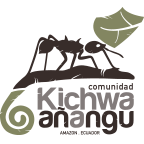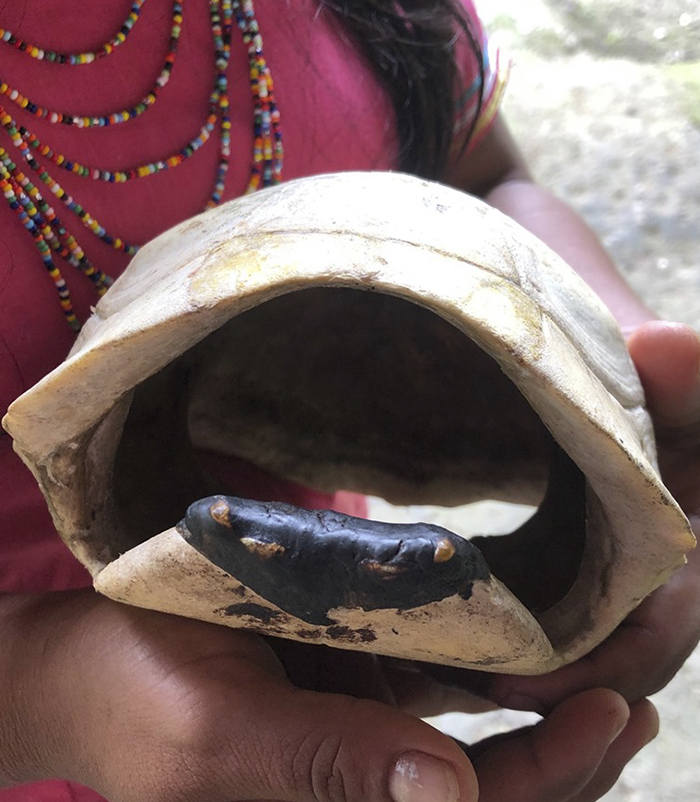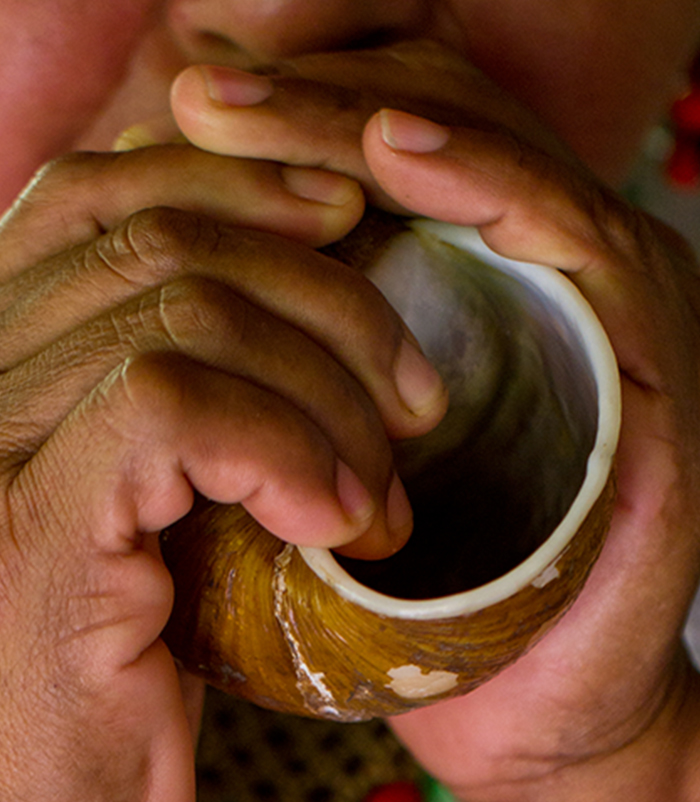The instruments used to sing and dance in the festivals are: the drum, made of animal skin and cedar wood, it has strings of pita chambira and wax; and the shell of the turtle: the pingullo.
The drum is made of wood, it has a different sound on each side, as the skin of a saino covers one end and the other is covered by the skin of a nocturnal monkey. The sound of the beating on the drum on the saino skin side is more severe, as the skin is wider.
The drum is made of wood, it has a different sound on each side, as the skin of a saino covers one end and the other is covered by the skin of a nocturnal monkey. The sound of the beating on the drum on the saino skin side is more severe, as the skin is wider.
The charapa shell is a river turtle. When hunted the meat is eaten and its shell is used as an instrument. For it to work properly, one end is covered with a layer of beeswax. This allows the musician's finger not to generate sound when touching this area.
The pingullo is a very important traditional instrument for the Kichwas. It is made from the bone of the wing of the harpy eagle, but since this is an endangered species, the instrument has also become extinct. Jiovanny Rivadeneira says: "The sound of this wind instrument is felt, it makes you tremble. The instrument is made from the bone of the wing of the harpy eagle, it was used at parties and played only by the 'curaca' or 'head of the house', it was heard from a long distance.
Today the young people no longer know about it, because colonization, the impact of the oil companies and the missionaries have put an end to it.
Maribel Cerda Grefa explains that "before, grandparents sang at three in the morning, they got up and played. It's made from a bird bone, from the wing of the harpy eagle. They use it at special parties like weddings. It is used especially by adults”.
In the Interpretation Center you can see the mamakuna playing the drum and shell of charapa, but this work was traditionally done by men at community festivals.
María Yumbo Mamallacta is one of the mamakuna working in the Interpretation Center. She says that in the community there are authors and composers who make their songs and sing them with the instruments that their grandparents used: the animal skin drum, the shell of charapa, rasqueta, huiro. They use these instruments because they want to follow the same path as their ancestors.
Maria says: "I, as Yasuní, am proud that my community is moving forward, we have taken care of flora and fauna and our culture as well. To strengthen our culture, we have our clothes, our food, our typical drink and our music, the dance. We do not use instruments, we use a material that is ours, drum, huiro, the shell of charapa. I really enjoyed singing to Yasuní". Here is a song written by Maria, sung in the Interpretation Center and inspired by living in the Yasuní Park, which recognizes its beauty and importance:
The pingullo is a very important traditional instrument for the Kichwas. It is made from the bone of the wing of the harpy eagle, but since this is an endangered species, the instrument has also become extinct. Jiovanny Rivadeneira says: "The sound of this wind instrument is felt, it makes you tremble. The instrument is made from the bone of the wing of the harpy eagle, it was used at parties and played only by the 'curaca' or 'head of the house', it was heard from a long distance.
Today the young people no longer know about it, because colonization, the impact of the oil companies and the missionaries have put an end to it.
Maribel Cerda Grefa explains that "before, grandparents sang at three in the morning, they got up and played. It's made from a bird bone, from the wing of the harpy eagle. They use it at special parties like weddings. It is used especially by adults”.
In the Interpretation Center you can see the mamakuna playing the drum and shell of charapa, but this work was traditionally done by men at community festivals.
María Yumbo Mamallacta is one of the mamakuna working in the Interpretation Center. She says that in the community there are authors and composers who make their songs and sing them with the instruments that their grandparents used: the animal skin drum, the shell of charapa, rasqueta, huiro. They use these instruments because they want to follow the same path as their ancestors.
Maria says: "I, as Yasuní, am proud that my community is moving forward, we have taken care of flora and fauna and our culture as well. To strengthen our culture, we have our clothes, our food, our typical drink and our music, the dance. We do not use instruments, we use a material that is ours, drum, huiro, the shell of charapa. I really enjoyed singing to Yasuní". Here is a song written by Maria, sung in the Interpretation Center and inspired by living in the Yasuní Park, which recognizes its beauty and importance:




